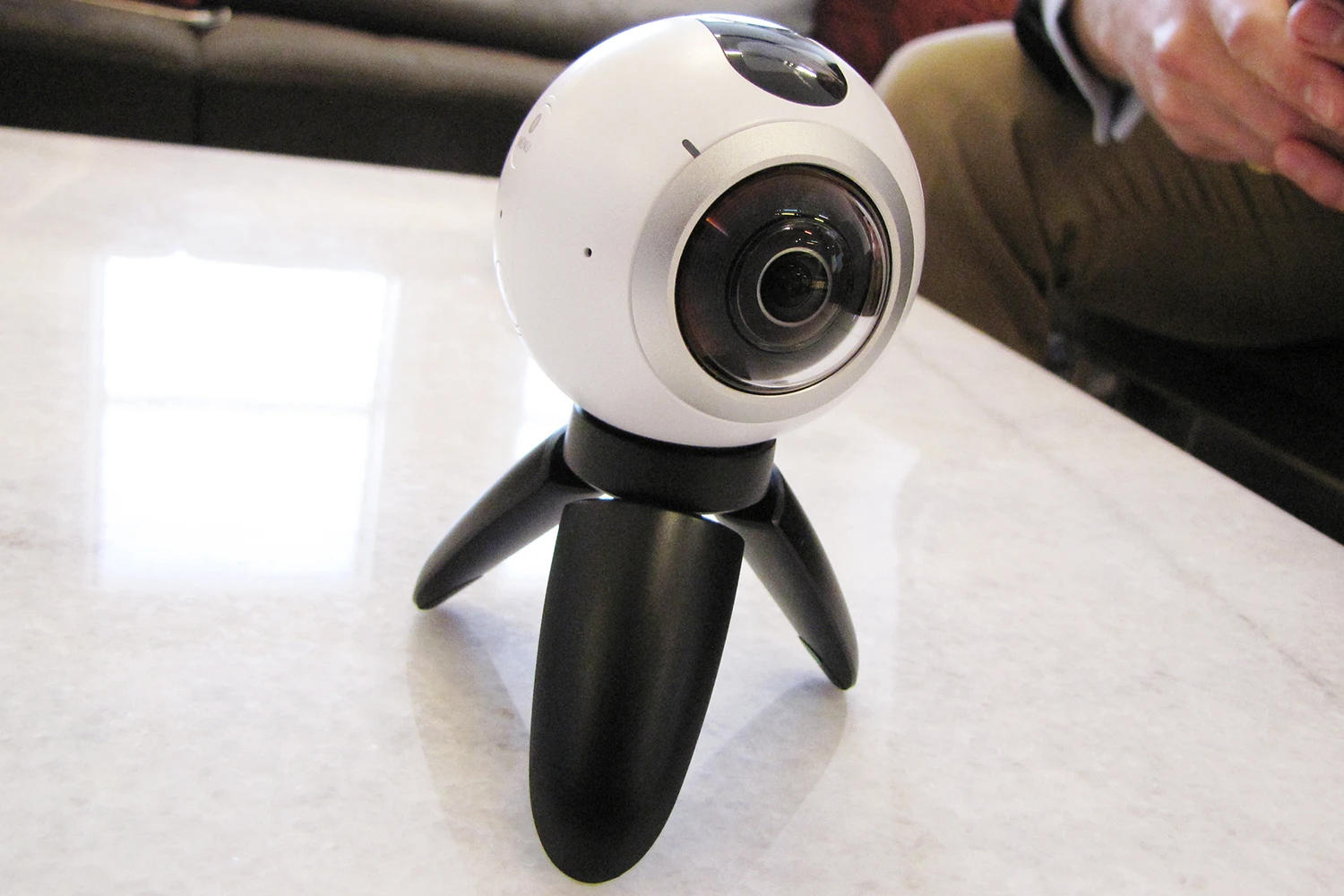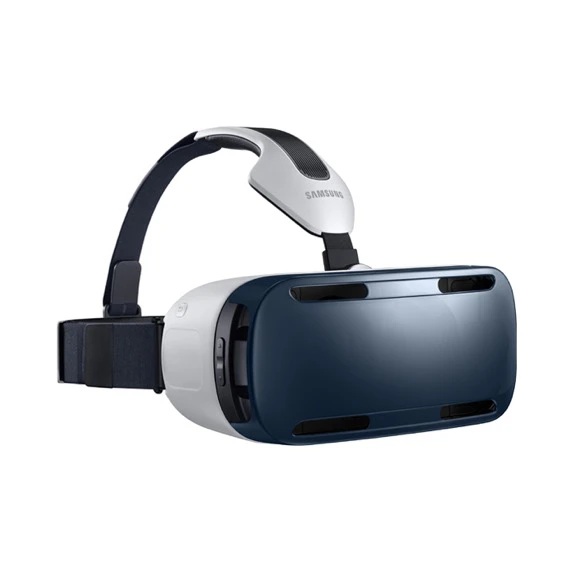Samsung today unveiled a stand-alone consumer camera that shoots 360-degree still photos and videos that, among other things, are ideal for virtual reality headsets, including the Korean company’s own Gear VR.
Known as the Gear 360, the small spherical camera features two fisheye lenses that each have a 195-degree field of view. It works by pairing with an app on Samsung’s soon-to-be-released Galaxy S7 or S7 Edge (or other, as-yet-unspecified Samsung phones) allowing users to wirelessly transfer photos or videos via Wi-Fi. Users can also see a live view on the phone.

Software on the phone automatically stitches imagery from the two lenses together into 360-degree photos or video. The camera can shoot video with a resolution of 3840×1920 pixels, or spherical photos of up to 30 megapixels.
The app also allows users to share their photos or video–the latter by posting to YouTube or Facebook, both of which support 360-degree video.
At the same time, users can import videos, albeit manually, to a Gear VR. It said that one of the big reasons it built the new camera was to give users the ability to create their own content for the virtual reality device rather than relying entirely on the curated content the company posts to its Samsung Milk VR branded interface for the device.
In a separate announcement Sunday at Mobile World Congress, Samsung said it would bundle a Gear VR with all Galaxy S7 and S7 Edge pre-orders.

Samsung hasn’t yet revealed the Gear 360’s price or when it will be available, but a company spokesperson said the expectation is for a second-quarter release.
The Gear 360 isn’t the only 360-degree camera aimed at consumers. Ricoh’s $350 Theta S has become a popular choice for many, given its slim form factor and ease of use. Because it’s not known how much Samsung’s offering will cost, it’s hard to compare the two head-to-head, but one can assume the Gear 360’s price will be competitive with the Theta S.
However, though it’s small and light–at 145 grams–the Gear 360 isn’t quite as convenient as the Theta S when it comes to sliding it into a back or jacket pocket. That’s because its spherical shape is bulkier than the Theta’s.
On the other hand, Theta users can only share videos or photos they take via a branded website–except for users of Google’s Nexus 5 or 6, who can post directly to YouTube. At the same time, Theta’s still photos top out at 12 megapixels, while the Gear 360’s can hit 30.
The Gear 360 uses an SD card for a storage of up to 128 gigabytes. Its battery can power the camera for up to 140 minutes of video.
The camera comes with a small tripod and it is compatible with any standard mount.
Recognize your brand’s excellence by applying to this year’s Brands That Matter Awards before the early-rate deadline, May 3.